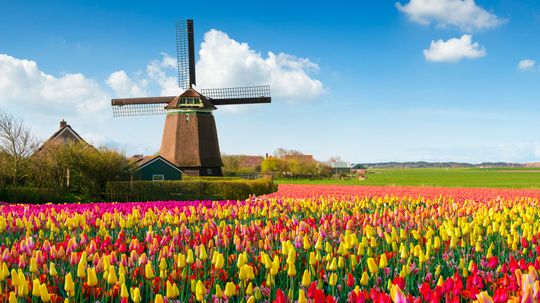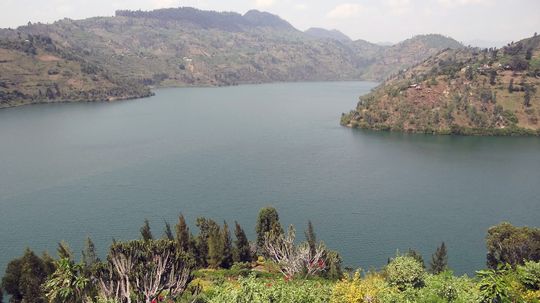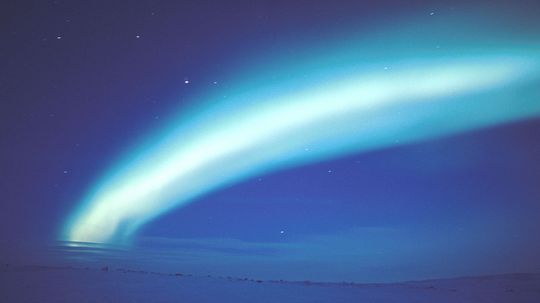Earth Science
Earth Science covers all facets of how the earth works, from from volcanoes to the world's oceans.

Worldwide Droughts Uncover Ancient Relics, Ruins and Remains

450 Huge Geometrical Earthworks in the Amazon Hint at Past Civilizations

Ancient Egyptians Believed Cats Had 'Divine Energy'

15 Types of Gemstones to Add a Little Sparkle to Your Life

13 Brown Gemstones for Understated Elegance

10 Red Gemstones That Evoke Power and Bold Luxury

10 Longest Rivers in the U.S.: From the Missouri to the Brazos

What Is the Smallest State in the USA? Looking at Area and Population

Venice Isn't Alone: 7 Sinking Cities Around the World

What Was the Largest Wave Ever Recorded?

Where Have All the Seashells Gone?

HowStuffWorks: 10 Weird Sea Creatures
Learn More / Page 8
Most mammals have a penis bone called a baculum, but humans don't. A new study sheds light on the history of the baculum, and why ours is missing.
Science has determined that disappearing completely into quicksand isn't possible - but that doesn't mean that getting stuck still won't kill you.
Surprisingly, living in a city with a high level of natural radiation doesn't have any ill effects.
By Alia Hoyt
Advertisement
The circle is only 5,000 miles wide.
The Denmark Strait cataract dwarfs every other waterfall in the world, but you can't see it because it's deep under the Atlantic Ocean.
The Great Lakes are named so for several reasons. HowStuffWorks looks at why the Great Lakes are so great, including their impressive depths.
By Mark Mancini
Petrified wood can be found all over the world, but how is it created?
Advertisement
The spring, or vernal, equinox traditionally marks the first day of spring - but climate scientists use a different date altogether. Find out more about this and other facts about the spring equinox.
By Mark Mancini
Underwater icicles, also called brinicles or sea stalactites, form when super-cold brine meets normal seawater. The sub-zero phenomenon can kill some sea life.
The formidable gusher could stop flowing for a few months in 2019 in order to repair some bridges in dire need.
One term might give you the impression of something grand and mysterious, while the other makes you think of claustrophobia-inducing environs that threaten human life. But what's the real difference?
Advertisement
It covers more than 30 percent of the planet, and is home to all kinds of sea creatures. What other facts make the Pacific Ocean so amazing?
By Mark Mancini & Yara Simón
NOAA's Argo program distributes floating observatories across the globe. Why? They collect data about the world's oceans that is critical to understanding the planet.
You can find hematite found all over Earth, as well as Mars. The bloodstone the main source of iron and is also used in jewelry and painting.
Anyone who's been to the ocean has probably seen the foamy white stuff that clings to the sand after a wave breaks and recedes, but what the heck causes that bubbly foam and is it dangerous?
Advertisement
Lakes seem like serene places to escape and enjoy peace and quiet. So you'd probably be surprised to learn that a lake can actually explode without warning. It's happened, with deadly consequences.
By Mark Mancini
But that doesn't mean they worshipped them.
By Dave Roos
How, in today's world, could a cave this massive go undetected for so long?
Prior to the mid-1990s, the magnetic north pole traveled at speeds of around 9 miles per year. Now, it's 34 miles annually. What accounts for the acceleration?
By Mark Mancini
Advertisement
The pigment ultramarine was as expensive as gold in medieval Europe; so how did it end up in the teeth of a nun buried at a monastery in rural Germany?
What makes peat bogs so perfect at preserving human remains? We look at what's behind these waterlogged areas of decaying plant matter.
These ancient wonders aren't static sculptures; they vibrate and shift throughout the day, creating a variety of sounds as they stretch their aging, eroding 'bones.'
Sastrugi are gorgeous snow formations found in the polar north, but they're also no fun to travel over.
Advertisement
The oceans on planet Earth cycle through daily tidal changes. But the ground beneath our feet experiences tides of its own, too.
By Mark Mancini
Will a town in southern Missouri be the epicenter of the next 'big one'?
By Mark Mancini
























